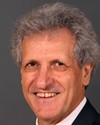Mr. Mackay and Mr. Langan, let me be arrogant and say on behalf of the entire committee, thanks for coming. It's been a great conversation and exchange of facts and ideas.
I want to go back again, if I can, Mr. Mackay, to current issues on financing, and then I'll come back to Mr. Langan on future issues.
You just addressed a matter with Mr. Jean about land assembly. When I asked you earlier about the amount of money that governments, if we're going Windsor-Quebec, have to put aside on a yearly basis, I think we struck a figure more or less around $2 billion, and governments wouldn't have to use all of that $2 billion. It wouldn't be all theirs and it might be divided among three separate governments.
One of the things you didn't give an indication of, although you alluded to it now, is that when you're assembling land, you're not giving away that asset. As you're building this line, government, however it's defined, actually acquires a real and material benefit that it does not lose.
So when you're giving the figure--and we picked $15 billion, but we could have picked $20 billion--you haven't discounted that amount with the value of the land that's going to stay with the government. So that's a benefit for down the road, is that what you're saying?



